3.27.12 Best Lei'd Plans
I was hell-bent on eating poi during my Hawaiian vacation. You know me, always determined to have that authentic experience. Guess what? No luck. The restaurant scene on the Big Island is kind of bleak. The place voted the island's best was resoundingly mediocre. Lilikoi (that's passionfruit) is ubiquitous, except it wasn't in season and overly-sweetened concentrate was being used for everything from cocktails to custards. Just not the same. And why not serve the amazing guavas, mangoes and strawberries that were colossally fresh and delicious? Well, because many Hawaiians, like their fellow mainlanders, have let go of much of their traditional, locally grown food and now rely on processed crap. Poi, a starchy paste made from fermented taro (or sometimes breadfruit), and traditionally eaten with fish was not on any restaurant menu. I didn't see it at any of the markets we visited, either. Foiled! We ended up cooking at home quite a bit since our rentals were equipped with pretty good kitchens and we ate well, mostly thanks to the beautiful farmers market in Hilo.
I did a little foraging. I found these pink peppercorns growing on the hike down to Pololu Valley. They are actually not pepper at all, but from a species of flowering plant in the cashew family. Their slightly sweet, piney flavor is quite lovely, and I crushed some with salt and chopped fresh herbs and rolled a log of local goat cheese in this mixture. Try this with any combination of fresh or dried herbs and spices.
Hanging from various tree were different types of dark wrinkly pods, all of them containing rows of mysterious brown seeds. These, on the left, turned out to be carob. The round nuts on the right are macadamias, and are delicious straight from the shell. They can also be ground into a very rich butter.
In the lush basin of the valley, we came across the wild almond trees (Terminalia catappa) that I had read about in this fabulous book. A fibrous husk encases a very hard shell and within lies a slim, somewhat juicy nut that tastes faintly of almond and coconut. If we'd had several lazy hours to do nothing but crack these open, I might have made any number of tasty confections, but it just wasn't that kind of vacation.
The outdoor market in Hilo was full of everything I missed seeing in the restaurants: local honey (pale gold and sweetly floral), fresh coconut water and milk, various kinds of avocado, eggplant, bitter melon, Maui onions, breadfruit, taro, local goat cheese, exotic flowers, homemade passion fruit curd, candied coconut, ginger juice...
...and some greens I'd never seen, like these pipinola shoots that turned out to be from the chayote plant. This is a green vegetable something like a squash, that is originally from Mexico but is now eaten all over the world. The greens tasted a bit like spinach (the vegetable equivalent of "tastes like chicken").
G was delighted to come across his favorite rambutans, a sweet and watery tropical fruit related to the lychee.
Banana leaves are used for steaming and wrapping various foods; these were stuffed with a combination of sticky rice, coconut milk, mashed taro and banana. Sort of like a riff on tamales...
This slim version was just sticky rice steamed with coconut milk.
Also new to me were these vibrant green shoots that unfurl from the coiled ho'i'o fernhead. They have a subtle flavor and somewhat slippery texture that is compared to both okra and asparagus.
I cooked them together with the pipinola shoots, some garlic and diced sweet Maui onion in a big skillet slicked with virgin coconut oil.
The pipinola shoots were a bit stringy, but the ferns were incredible—silky and delicious. I made another batch on a different night, sauteed with some gingery black bean paste, and liked them even more on their own.
A big bag of these oyster mushrooms (enough to feed 6) cost $10 and cooked to a meaty perfection in a combination of butter and olive oil, sprinkled generously with the local black salt. They were a great accompaniment to our tasty steaks, from the local cattle we saw grazing everywhere on the island's gorgeous green grass.
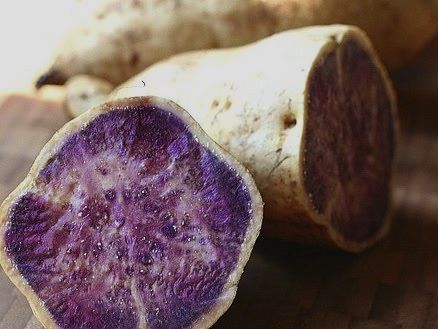
purple sweet potatoes aka okinawa yam
These purple sweet potatoes are closer to garnet yams than Peruvian purple potatoes. Though pale on the outside, they are a deep antioxidant-rich shade inside, and perhaps the sweetest starchiest potato ever.
We ate ours mashed with copious amounts of butter and lots of lime juice, which made light pink swirls in the mix.
As a coarse finishing salt, we used the local black lava salt, a subtly smoky blend of sea salt and purified volcanic charcoal. The salt evaporates in above-ground pools that form naturally from lava flows and activated charcoal, a proven anti-toxin and digestive-tract palliative, is added for color as well as its detoxifying effects.
We drank cocktails of coconut rum with coconut water and lime and, for dessert, treated ourselves to tapioca pudding made with coconut milk and raw cane sugar, served with chunks of lime-and-ginger-drenched pineapple. Maybe we should open a restaurant there...







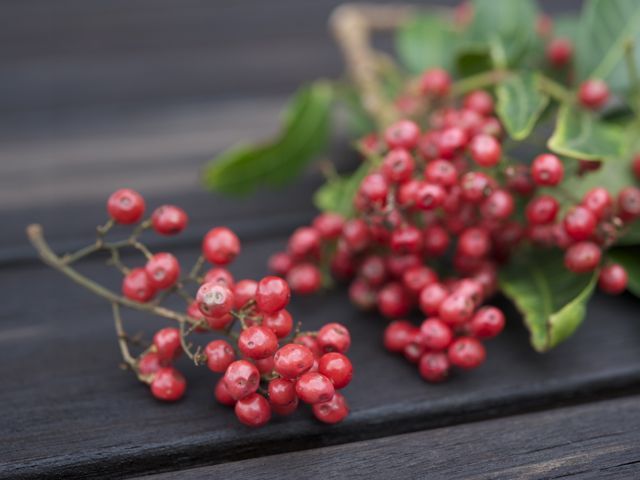
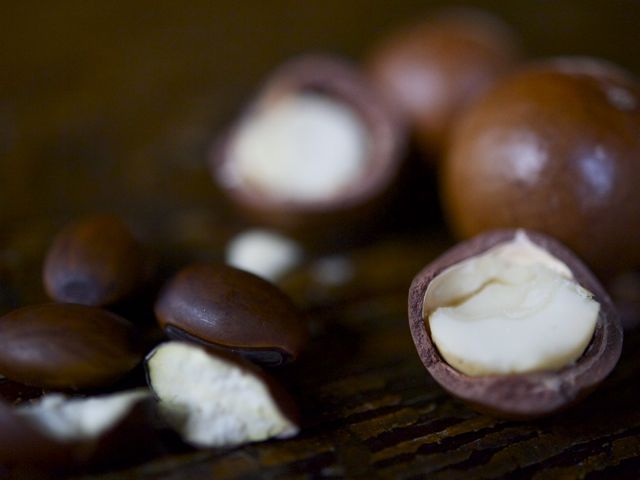
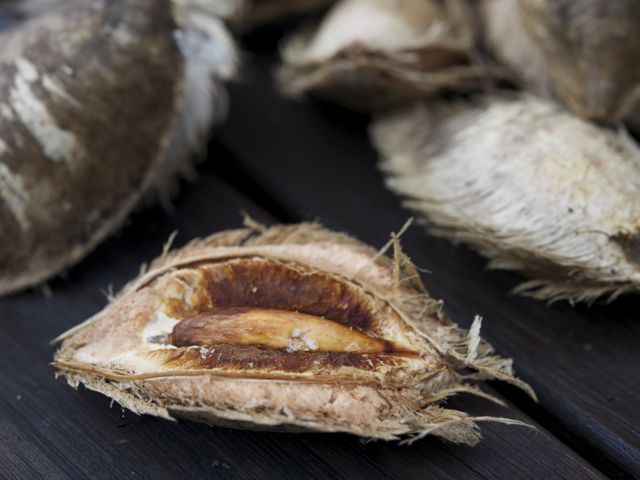
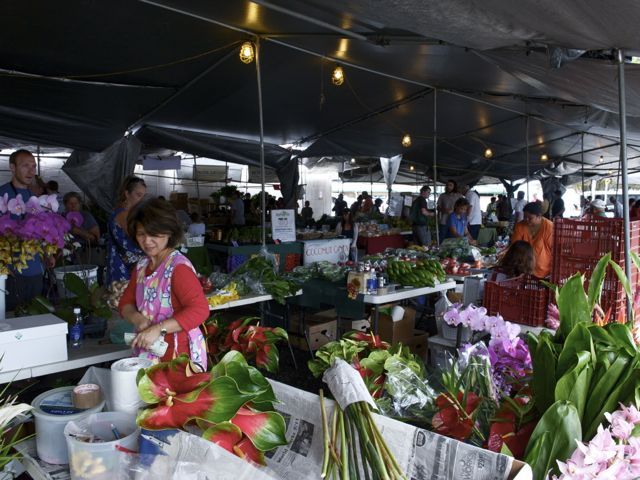
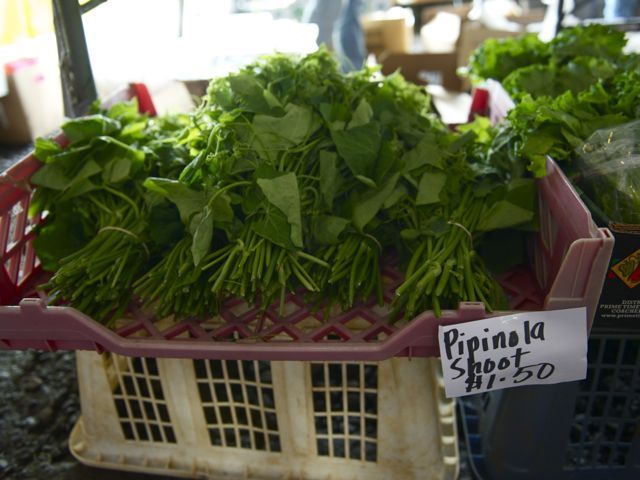
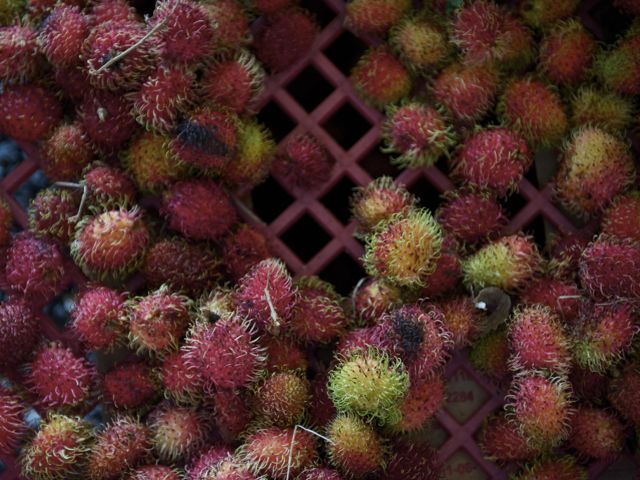
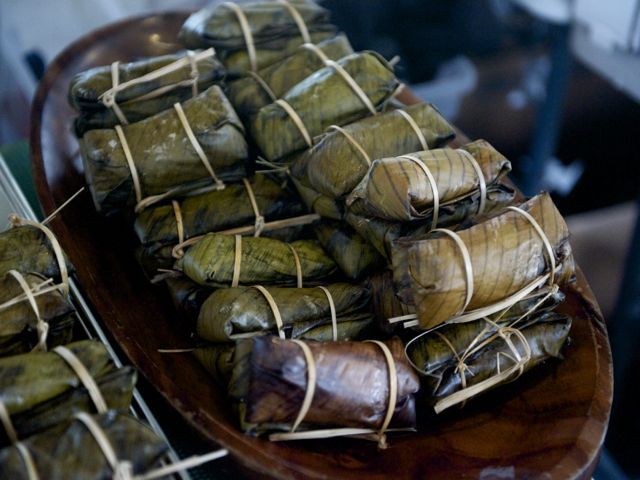

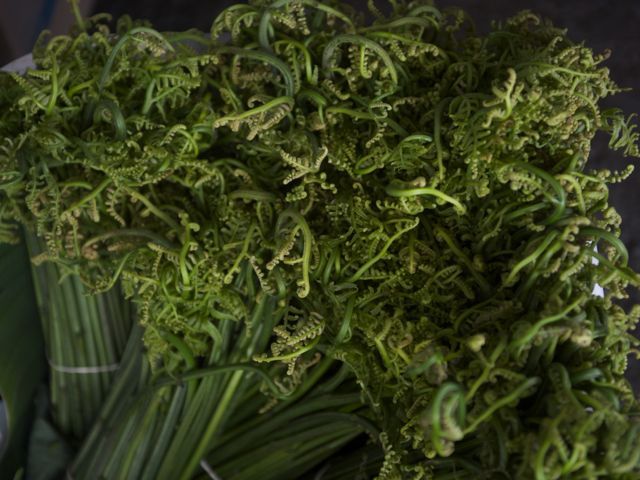
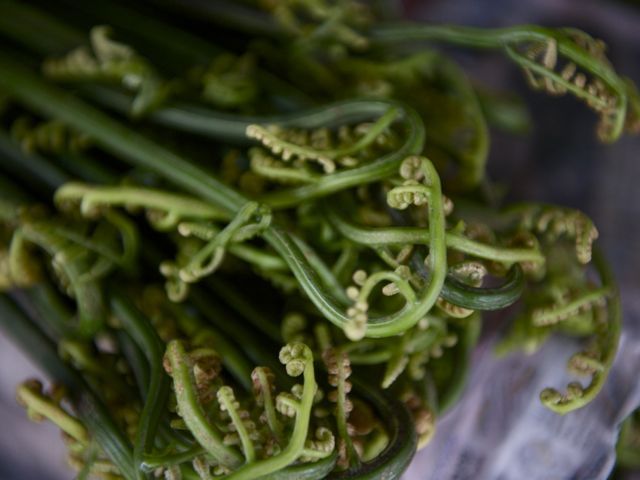

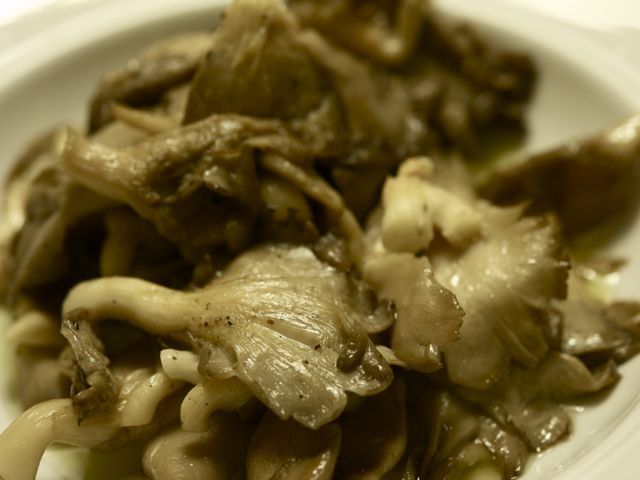
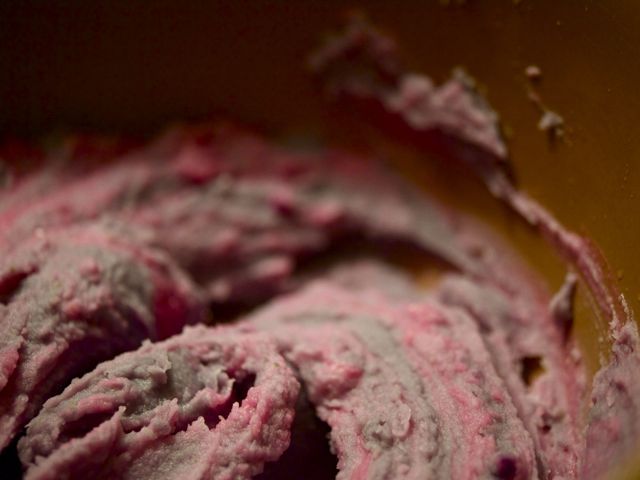
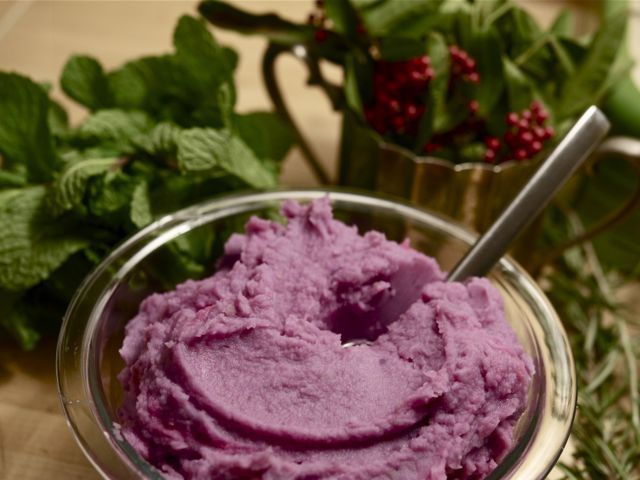
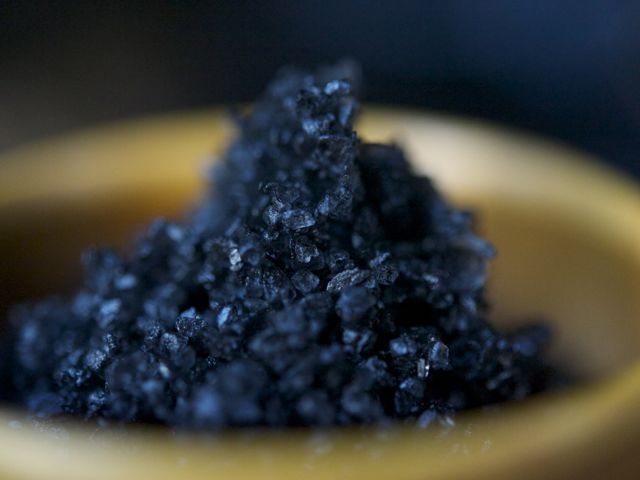
14 Comments